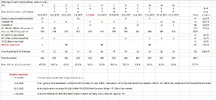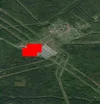Shock refueling: the cancellation of fuel discounts resulted in millions of dollars in losses for carriers
October 16, 2025
The diesel shortage is most acute in Siberia, where a number of gas stations have been out of fuel since September 21, 2025, and where there is fuel, queues are forming
The Russian freight transport market is facing a systemic crisis due to a sharp rise in prices and a shortage of diesel fuel. This situation is causing direct losses for operators, forcing them to change their fueling logistics and prepare for higher tariffs for end customers.
Ivan Grishin, CEO of TEK Lidertrans LLC, notes that suppliers have completely cancelled previously existing discounts, which reached 11-20%. He cites Gazprom as a prime example, having eliminated its discounts following the attacks on oil refineries in the Yaroslavl region.
Mikhail Shiltsev, founder of the transport company Arion, reports direct losses of 8 million rubles for his own fleet for September 2025. Meanwhile, fuel costs for the reporting month increased by 4 million rubles.
Dmitry Ievlev, CEO of Avto-PEK, notes that diesel fuel prices increased by approximately 5% in September compared to the previous month. According to him, fuel accounts for approximately 30% of fixed operating expenses for transport companies, so its price increase directly impacts final tariffs.
Transport companies are attempting to mitigate rising costs by optimizing fuel station logistics. According to Dmitry Ievlev, Avto-PEK is developing its own gas stations in major Russian cities, including Moscow, St. Petersburg, Novosibirsk, and Yekaterinburg, as well as a partner network across the country. However, Andrey Pavlov, owner of P.A.V.-TRANS LLC, points to a new problem: the price of fuel on the exchange has almost reached the same level as the price at retail gas stations. This is forcing even companies with their own fuel infrastructure to temporarily forego purchasing and refuel at gas stations. Winter diesel fuel on the St. Petersburg Exchange rose in price over the two weeks of October, from 77,118 rubles per ton to 77,652 rubles.
Fuel availability has worsened to the point of shortages, particularly in some regions. Mikhail Koptev, Commercial Director of the federal transport company Skif-Cargo, told Forbes that the shortage is most acute in Siberia, where a number of gas stations have been out of diesel since September 21, 2025, and where they do have diesel, queues are forming. Independent gas stations are reporting delivery delays or incomplete deliveries. In Moscow, he said, the situation is less critical for now, but outages are being reported in the Lipetsk and Tula regions, Tatarstan, and Crimea. Eduard Mironov, Director of Transport Services Procurement at FM Logistic in Russia, is facing the introduction of refueling limits: 300 liters per day in the Tver and Leningrad regions, 200 liters in the Lipetsk region, and 200-250 liters in the Samara region and Tatarstan. He emphasizes that restrictions have been imposed by both vertically integrated companies and independent gas stations.
The problems extend beyond trucking. Sergei Khrapach, Chairman of the Board of the Interregional Autotrans Association, reports interruptions in fuel supplies for city buses in certain municipalities in the Krasnodar Krai, Rostov Oblast, and Kursk Oblast. He notes that the permitted tariff increase does not cover the gap between the increased costs and the actual revenues of transport companies.
Alexander Aksenenko, Deputy Chairman of the State Duma Committee on Construction, Housing and Utilities, notes that fuel shortages are already noticeable nationwide. Nikolai Yaremenko, Associate Professor at the Financial University under the Government of the Russian Federation, agrees that the problem is catastrophic in the south but is spreading nationwide. Nikita Blokhin, Senior Analyst at Alfa Bank, calls the fuel market situation critical and extreme, attributing it to the widespread shutdown of oil refining capacity, including not only scheduled maintenance but also damage to refineries. Aksenenko points to the most dangerous trend: due to the loss of approximately 40% of refining capacity, fuel is not being delivered to reserve warehouses, and current stocks at gas stations are used as commodity reserves that are not replenished, meaning the shortage is likely to worsen.
Rosstat statistics as of October 6 put the average retail price of diesel fuel in Russia at 72.94 rubles per liter. The highest prices were recorded in the Far Eastern Federal District, where the average price reached 80.91 rubles per liter, and in Yakutia, 92.78 rubles. The lowest prices were recorded in the North Caucasus Federal District, at 68.27 rubles per liter, while the lowest price in the Republic of Ingushetia was 65.18 rubles.
As a reminder , Russian President Vladimir Putin signed a decree introducing a moratorium on the zeroing of fuel damper payments from October 1, 2025, to May 1, 2026. The decree also abolishes the additional excise tax on the production of winter diesel fuel by blending summer grades with aviation kerosene outside of refineries .




